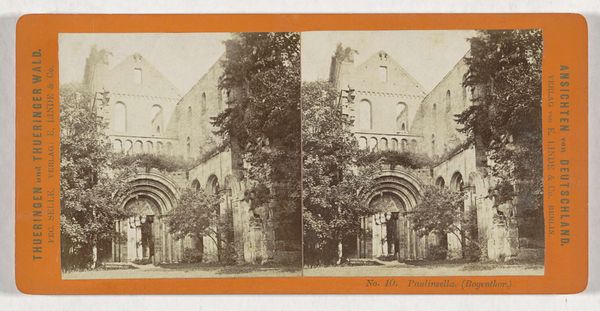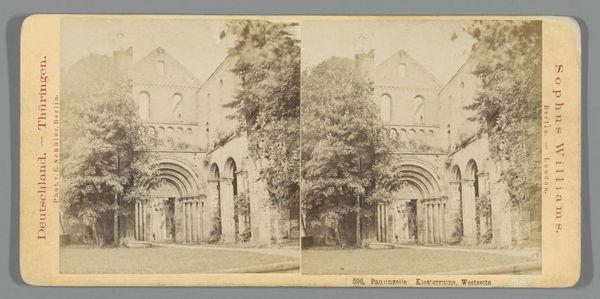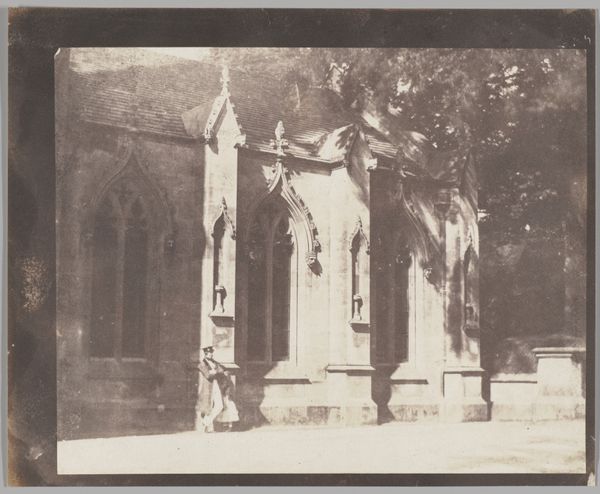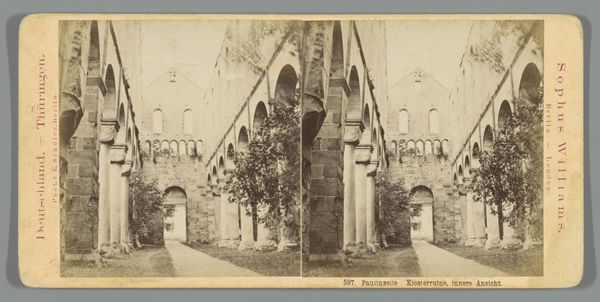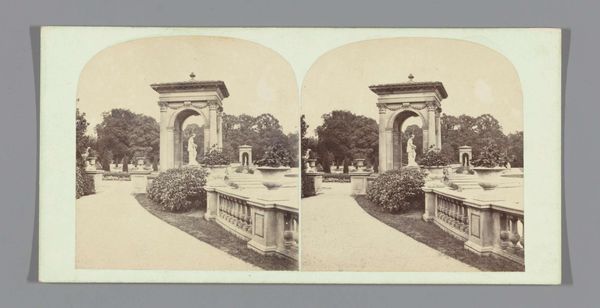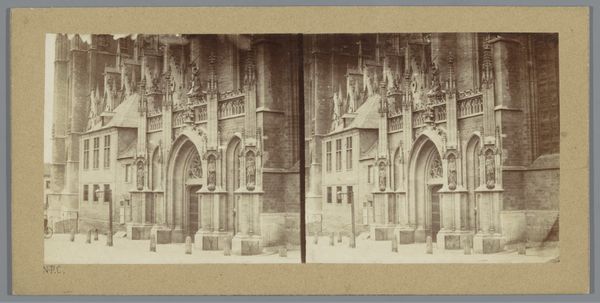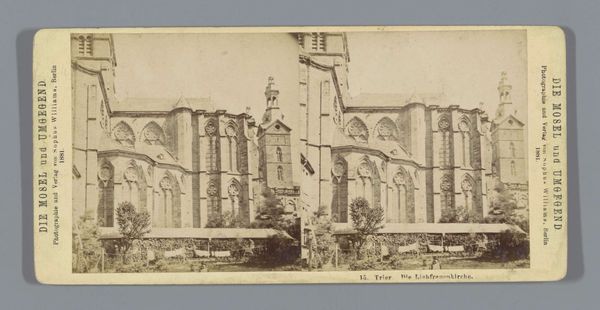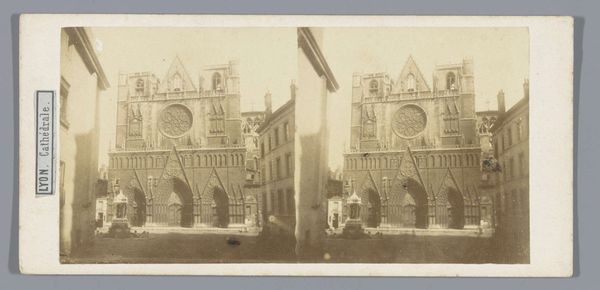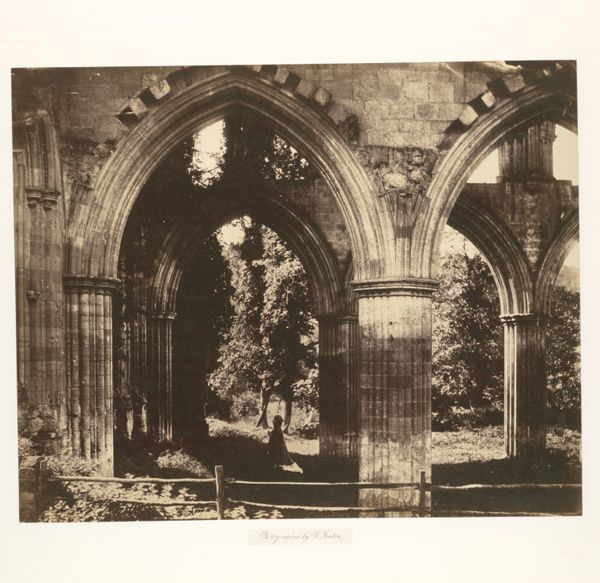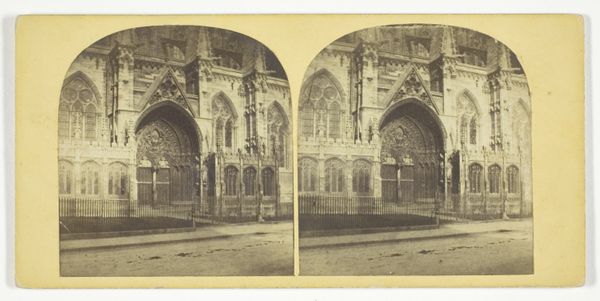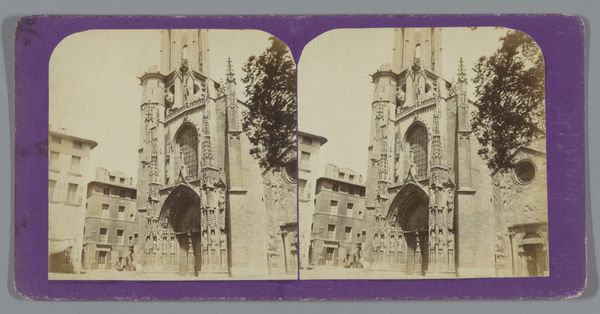
photography, site-specific
#
landscape
#
photography
#
romanesque
#
site-specific
#
cityscape
Dimensions: height 87 mm, width 177 mm
Copyright: Rijks Museum: Open Domain
Hermann Selle made this photograph of the Paulinzella Monastery ruin. While photography today is as easy as pressing a button, early processes were painstaking. The photographer would have used a large format camera and glass plate negatives, coated with light-sensitive emulsion in a darkroom. This would then be exposed in the camera, and developed through a chemical process. Selle's photograph is a stereo card, using two lenses to create a three-dimensional effect when viewed through a stereoscope. Reproducing photographs was an industrial process at this time, as seen in the printed credit on the card. The sharp detail and tonal range is quite remarkable. Selle has chosen a composition that emphasizes the ruinous state of the architecture. The photograph gives us a tangible connection to the site. Through it we can consider the labor involved, both in constructing the monastery and in the photographic process that captured it. It is through understanding these material processes and social contexts that we gain a fuller appreciation for the photograph’s meaning.
Comments
No comments
Be the first to comment and join the conversation on the ultimate creative platform.
